The Ford Mustang and Chevy Camaro “pony cars” might have just barely survived the darkest days of the Malaise era, but so-called “muscle cars” met a quick end. These two-door family sedans with oversized engines simply couldn’t exist in a world where big motors–or even powerful ones–were gone.
One of those brands responsible for the legend of arguably the best-known muscle car almost succeeded in bringing the traditional muscle car back to life in the seventies, but the idea turned out to be doomed from the start.
For today’s Pontiac Pthursday, we’ll explore the ultra-rare attempt at a latter-day GTO: the 1977 Can Am.
G. T. Nooooo
Look, I’m well aware that many Hemi-powered Road Runners or Super Bees would “tach it up” and absolutely shut down even the fastest of Pontiac’s fabled muscle cars back in the day. What can’t be argued is that Dodge and Plymouth didn’t have Jim Wangers behind them, the marketing impresario who was instrumental in bringing enough hype to make the GTO the first name you’d think of in factory street machines.
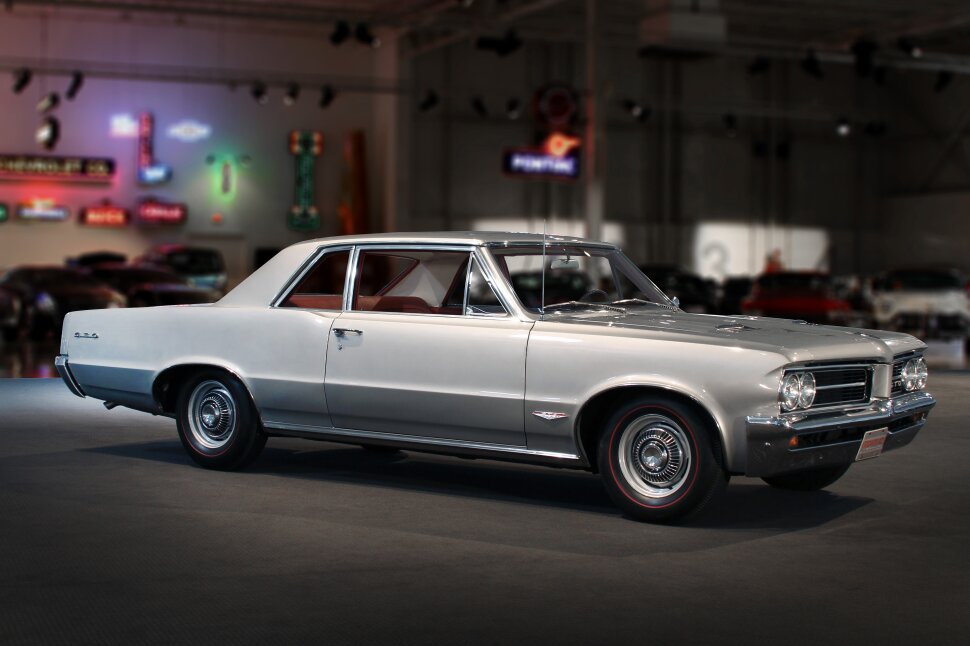
Employed by Pontiac’s ad agency at the time, Wangers tirelessly worked with then-division head John DeLorean to promote the “Goat”, getting it on the cover of Car and Driver with artwork showing this big coupe in an imagined battle with the Ferrari GTO; in the road test, the Pontiac reportedly generated a 4.6-second zero to sixty time.
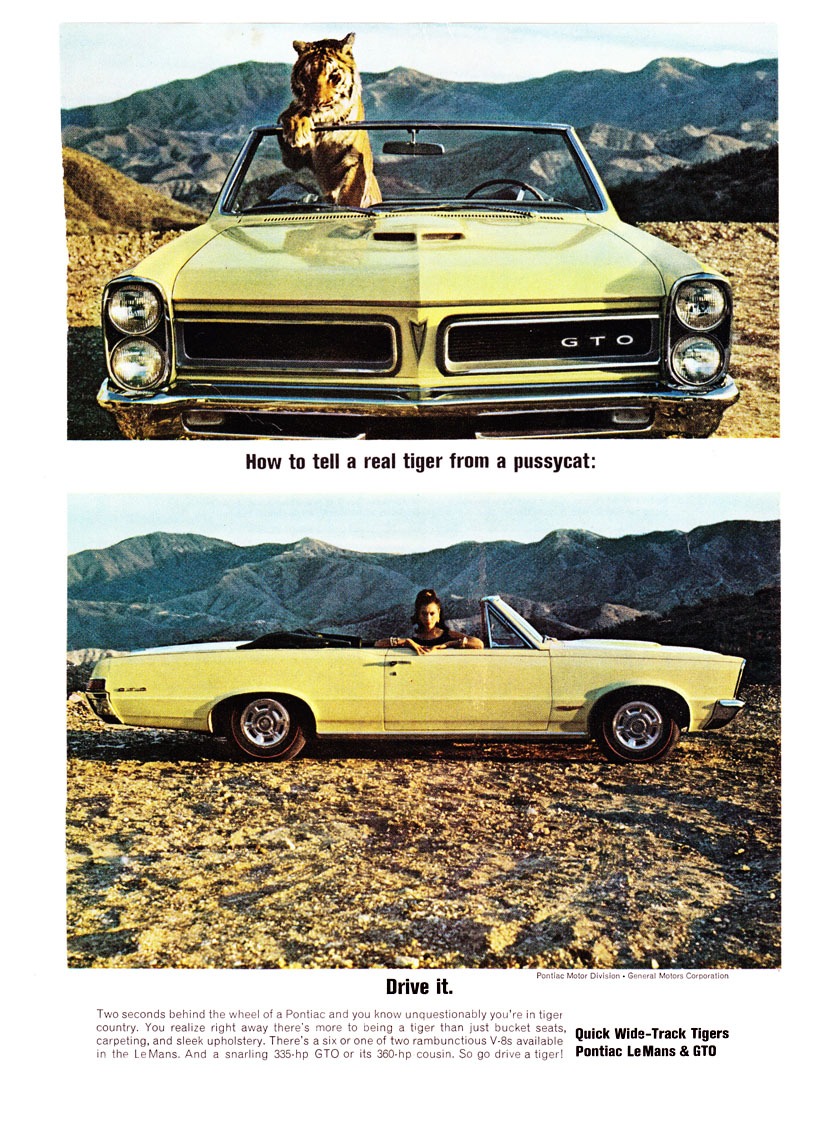
Few people believe that figure was real; former Mopar engineer and later Car and Driver writer Larry Griffin has written extensively about heavily modified “ringers” from GM at the time, and this almost-certainly fictitious performance figure tainted the GTO with some Mopar-or-no-car street racers. You know what? It didn’t matter. Much of the public then and now still sees the “Goat” as the G.O.A.T., whether it’s true or not.

Within a mere eight years, however, it was all over. When the 1972 LeMans on which the GTO was based got replaced by the new 1973 “Colonnade” bodystyle, the malaise era had truly begun. The hot 300-horsepower 455 CID V8 in that car now only pumped out 250 horsepower as cars slowly and steadily lost power in an effort to improve gas mileage. The new styling didn’t immediately find favor with the public either, and the launch of the Lemans-based euro-styled Grand Am meant that the “muscle car” style-GTO was out of step with Pontiac’s marketing plans for the mid-sizer, so this “Goat” barely lasted a year.

Surprisingly, things got worse for 1974. The GTO lived on for twelve more months as a package for the little Ventura. The sole powerplant was a 200-horsepower 350CID V8; Motor Trend could only get a 9.5-second zero-to-sixty time out of their test car (another magazine was able to get a 7.7-second time from a four-speed example). Beyond the hood scoop and badges, little distinguished this GTO from other run-of-the-mill lowly Nova clones. The idea of a super-compact “muscle car” with virtually no visual pizazz fell flat, and the GTO was now officially dead.
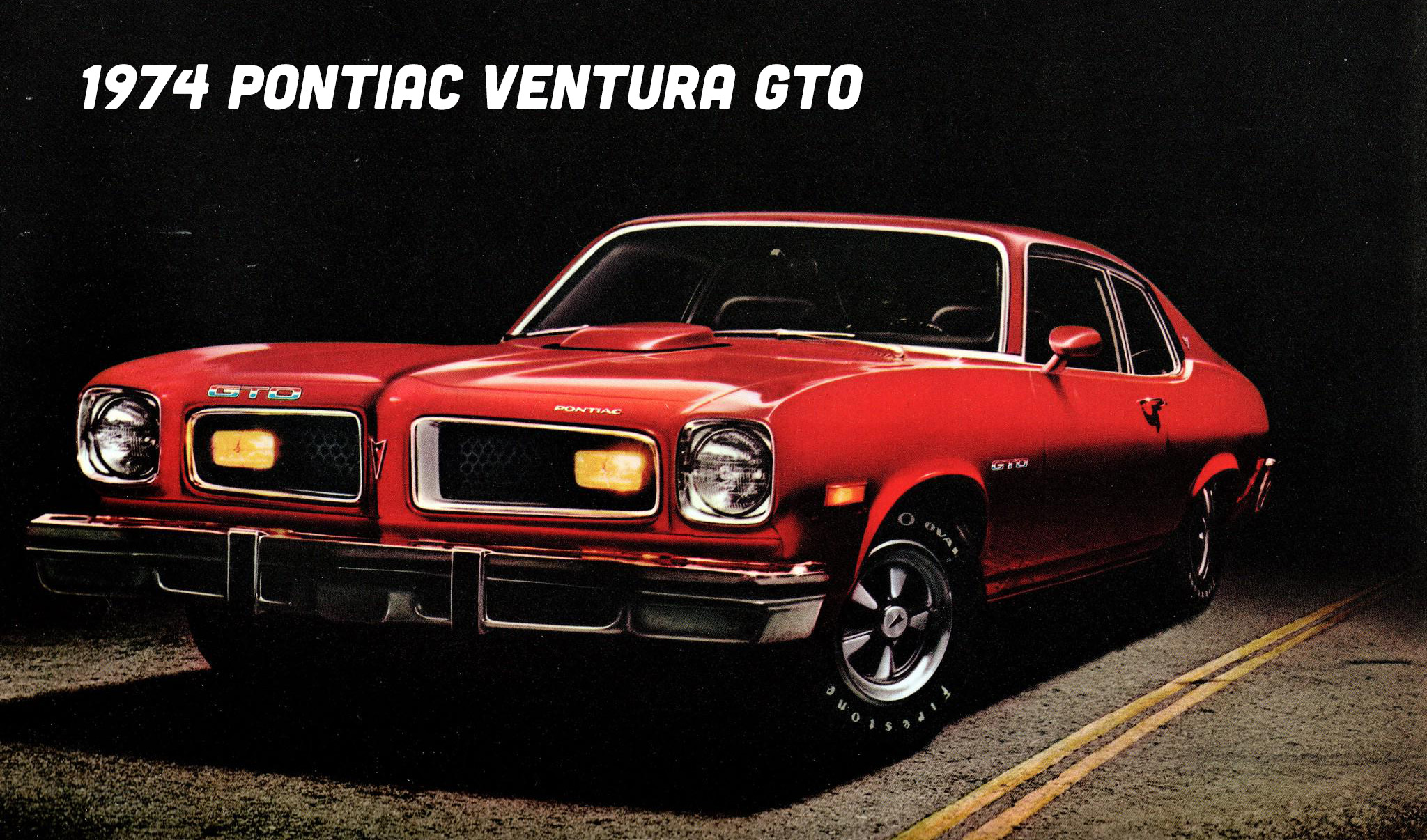
In these dark times, if anyone could resurrect the “Goat,” it would have to be the person who helped create it in the first place. Well, he certainly tried to, at least.
They Got His Goat
By the mid-seventies, Wangers was actually doing more than promoting cars: he was building them. I could say that Wanger’s Detroit-area-based Motortown Corporation was an outside contractor making “muscle cars,” but it’s hard to use that word to describe the vehicles he modified into things like the Mustang II Cobra and Dodge Aspen R/T. Yikes. Ever the promoter, the cars did at least look the part of racy performance machines if you didn’t realize how anemic they were.
Naturally, the old GTO remained close to Wanger’s heart, but a by-then-John DeLorean-free Pontiac division initially didn’t necessarily want to hear of it. However, while 1973-on Buick Regal, Olds Cutlass, and Chevy Malibu GM “Colonnade” mid-sizers were selling strongly, the Pontiac LeMans was struggling in the market. Pontiac internally tried to spark interest in the car with a Bicentennial-themed show car called the All American. White with red and blue stripes, it sounded awful, but legendary GM stylist John Schinella made it into a rather appealing piece with awesome color-keyed honeycomb wheels, air deflectors at the wheel openings, and a tasteful ducktail spoiler.

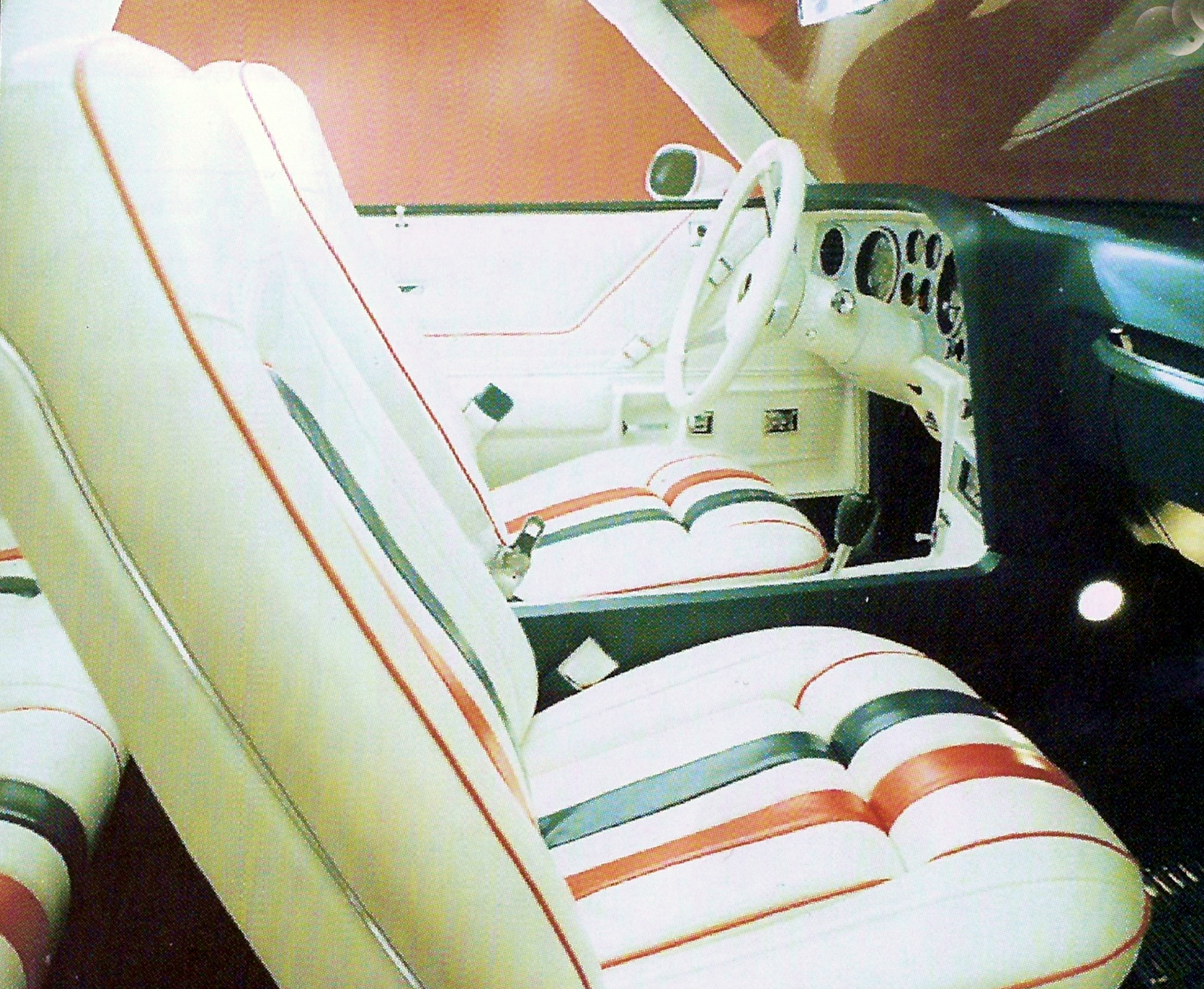
Wow, that interior. If anyone ever asks, “What were the seventies like?” Just show them that picture.

Despite being well-received, Pontiac felt there was an overload of red, white, and blue 1976 editions on the market then, and the All American went nowhere.
By this time, though, the Grand Am sold so badly that it was dropped from the lineup, and the continued LeMans sales drought caused then-General Manager Alex Mair to finally reach out to Wangers to see what his Motortown facility might be able to do with a publicity-generating special edition LeMans. Unfortunately, Wanger’s initial proposal was an orange-and-black GTO Judge tribute with a shaker hood scoop that Pontiac management instantly rejected. Undaunted, Mair let Wangers have another go at the job with marketing manager Ben Harrison.
Working with Pontiac stylists, Wangers basically combined the All American concept and the rejected Judge mockup into one car. Better yet, this limited-run LeMans was going to have something special under the hood: the new-for-1977 T/A 6.6 liter (400CID) slated for the great Trans Am that would ultimately serve as a blocker car for a tractor-trailer full of Coors beer. Also, you can be damn sure that Wangers would make the connection to Pontiac’s old performance legend (according to Jim, the ad below is the only time Pontiac ever acknowledged the “Goat” nickname in print) with what they would call the “Can Am”.
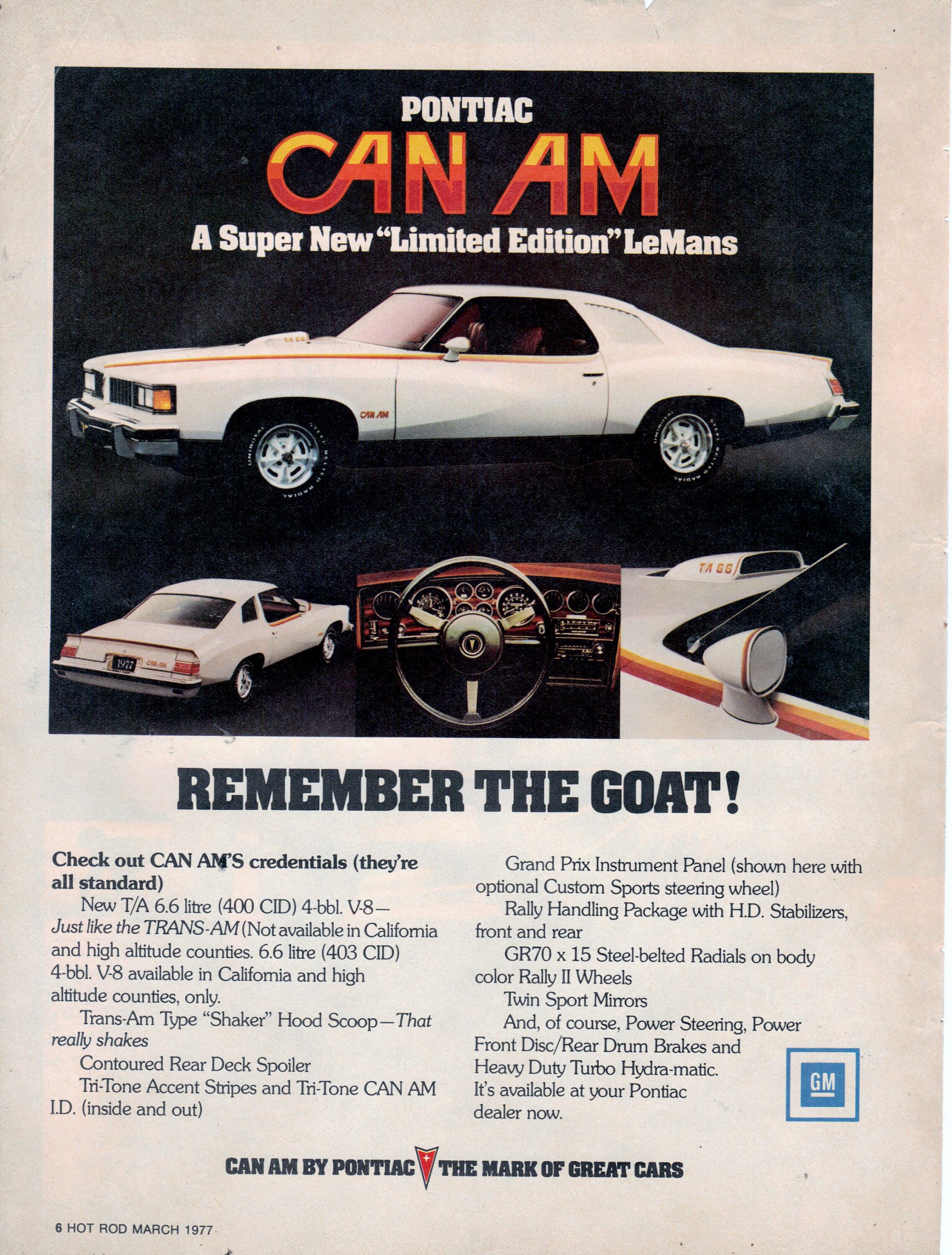
The ’77 nose was more aggressive and visually worked far better than the “beak” on the earlier cars.
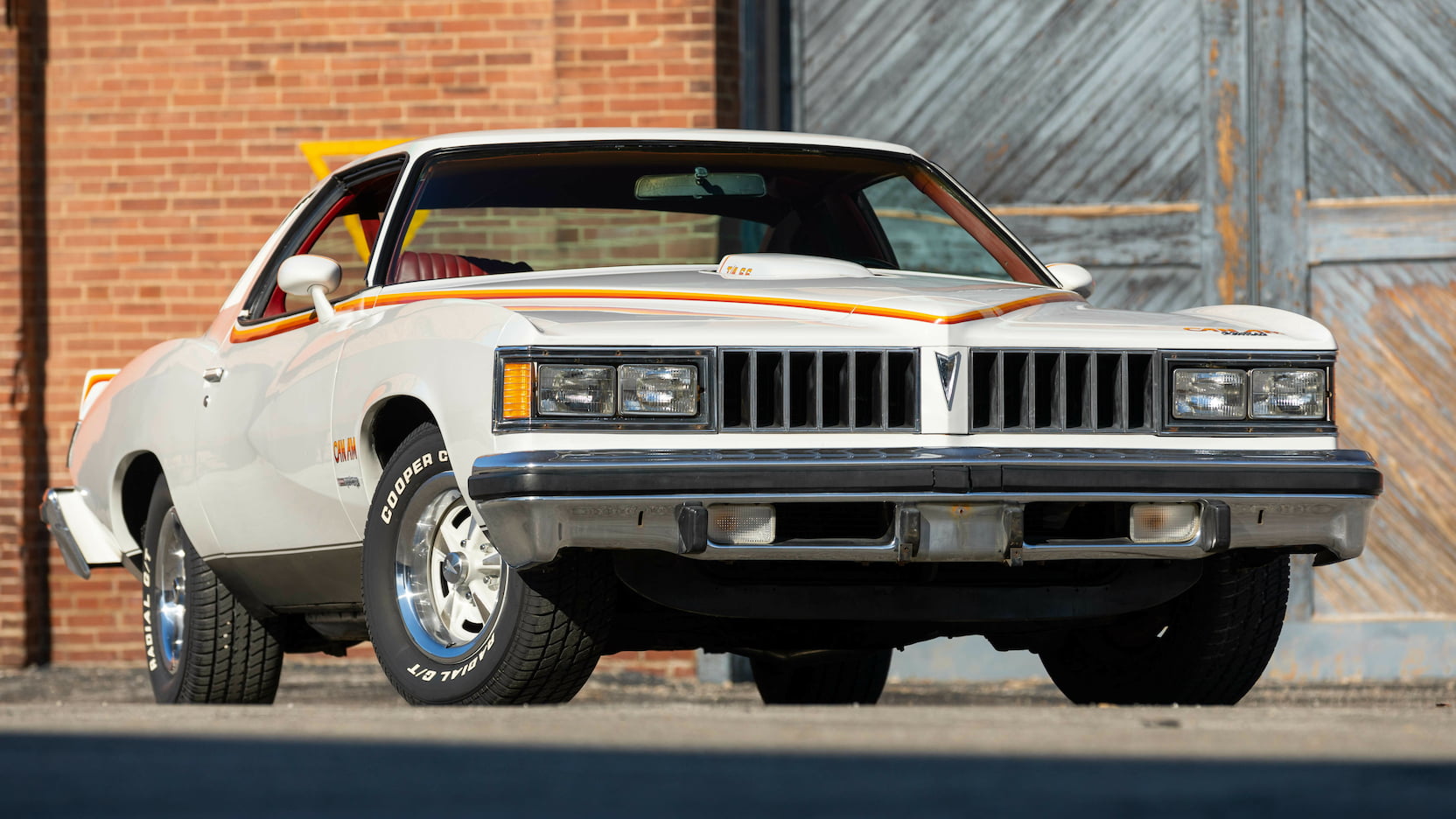
Orange, gold, and yellow stripes replaced the patriotic ones on the All American, while white Pontiac “Rally II” wheels complemented the hood scoop and new rear spoiler. Sure, it’s as cheesy as an episode of CHiPs, but it’s still a rather handsome car that’s not too over the top for the period.

Why did Wangers and the Pontiac team select “Can Am” as the name for this creation? As silly as it sounds, it’s reported that Ben Harrison took scissors to leftover “All American” decals still sitting around from that prototype car of a few years before (scroll up and see the similarity in the font). The letters A-M and C-A-N were cut out of the old stickers and applied to the prototype. Name chosen.
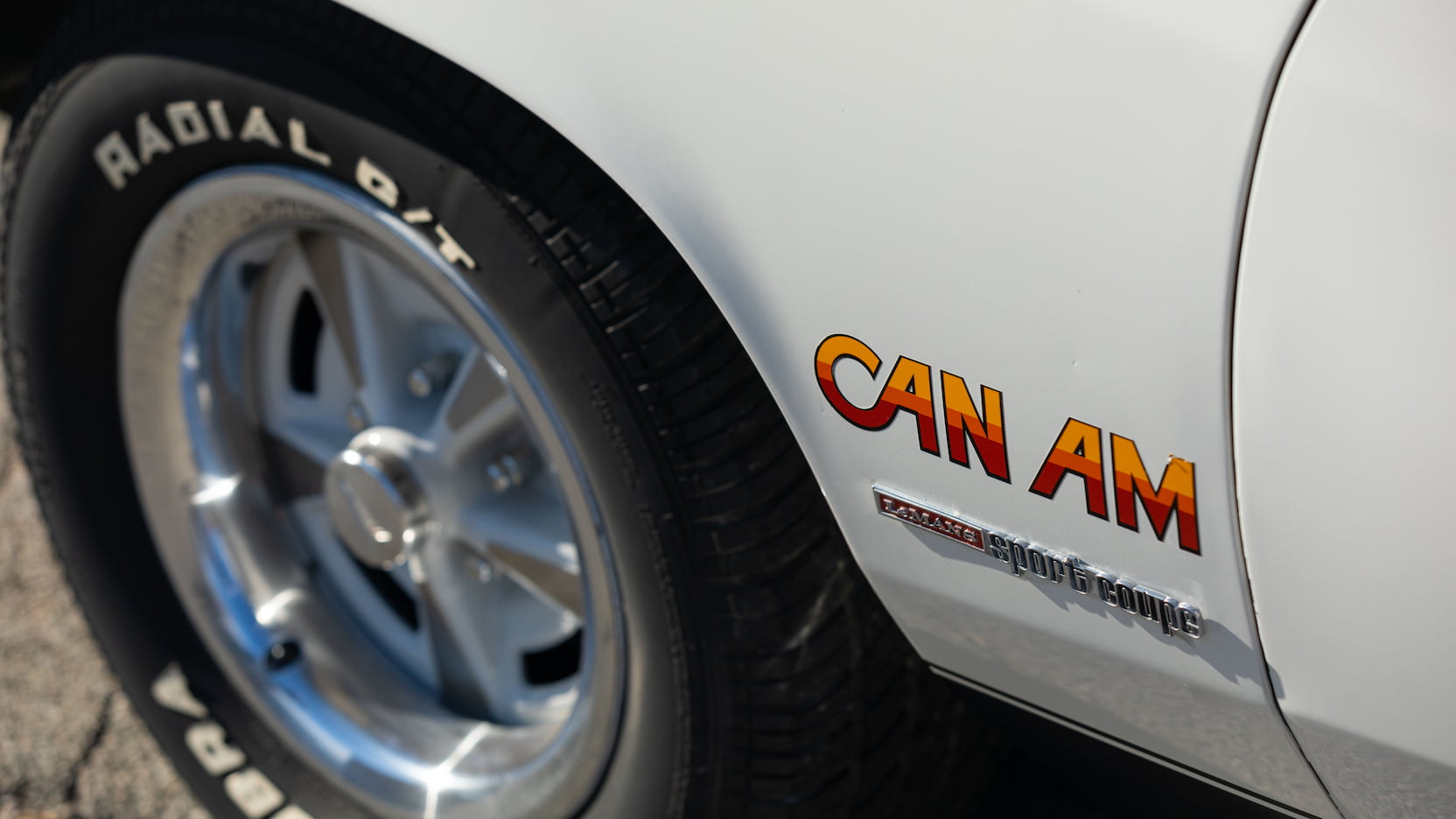
A three-speed automatic was the only transmission option, but the “Radial Tuned Suspension” and fat sway bars helped elevate the lowly LeMans chassis. With only 200 horsepower in a car much bigger and heavier than the Firebird, that W72 V8 was never going to offer old-school muscle car performance. A zero-to-sixty time of around ten seconds was only about as fast as the previous year’s LeMans with the by-then-discontinued 455 V8. Still, it wasn’t horrible for the time and was easily as good as any competitive “sport sedan”. The more important thing is that Wangers and the Pontiac team gave buyers a real, cohesive car; like the original GTO, it felt like a unified package inside, outside, and under the hood, rather than just a few stuck-on gewgaws. Honestly, other than the T/A motor, that was essentially what it was. But it worked. Perception is everything.

The interior is as seventies as a polyester suit, but admittedly has a nice set of round gauges, a cool-looking steering wheel, and typically a floor shift on the center console. It could have been much worse.

There’s a full set of gauges, though not everyone opted for the large tach to replace the massive clock on the left. Actually, the entire dashboard was taken from a Pontiac Grand Prix, something that would ultimately be a point of contention. You see, the Can Am was star-crossed from the very outset.
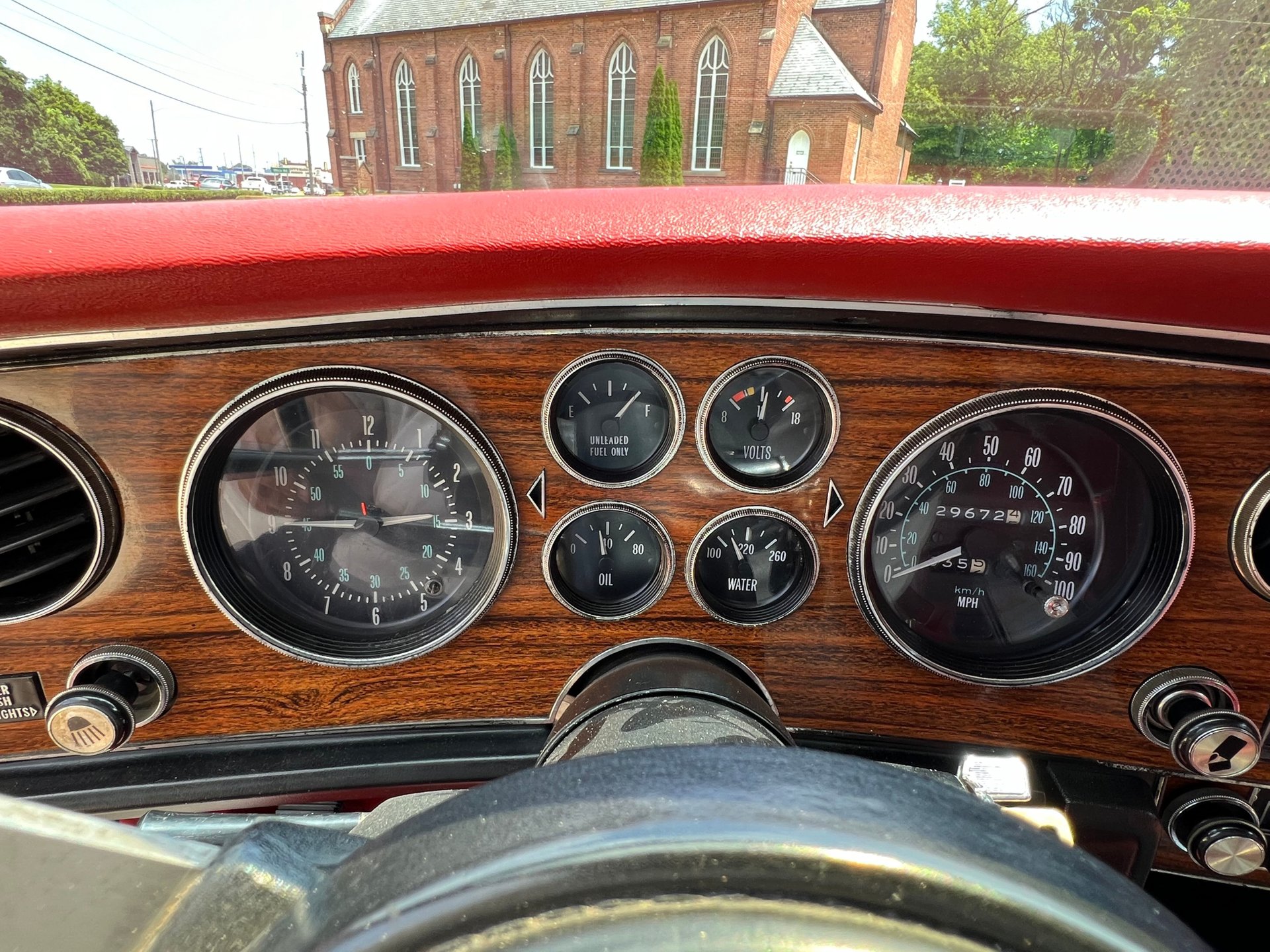
Unlike the Trans Am, the LeMans body offered a decent trunk and plenty of room for three-across seating in back.
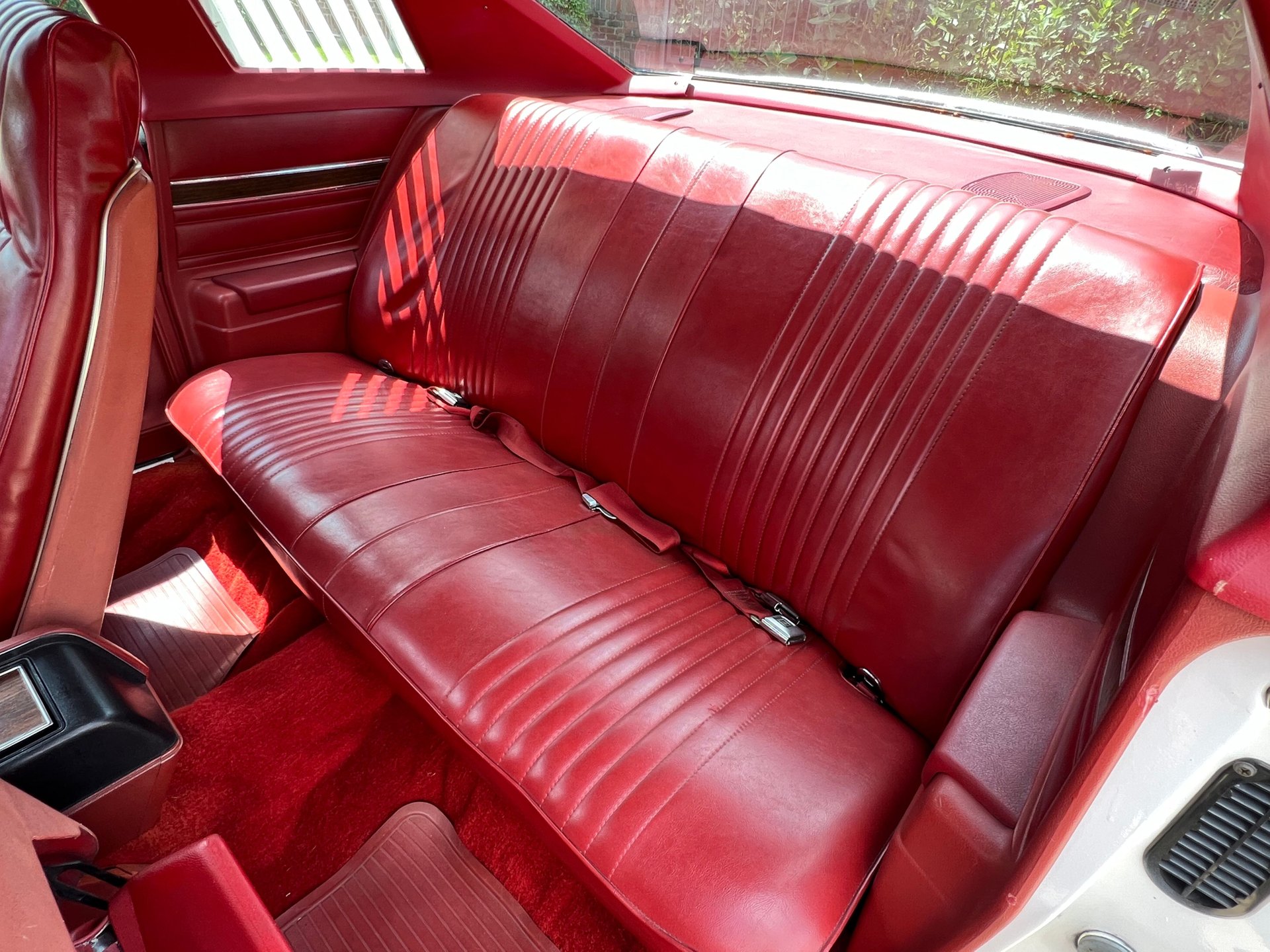
Pontiac top brass still wasn’t feeling this idea of a hot LeMans, but Muir overruled them and approved a run of 5000 cars. Ever the promoter, Wangers didn’t hesitate to push the whole “latter-day GTO” narrative; he wasn’t that far from the truth. Wanger’s premonition about a demand for a modern-day muscle car proved true; it’s safe to say that the Can Am was initially a smash hit. Reportedly, anywhere from 6,000 to 10,000 orders were on the books for Can Ams with Wanger’s Motortown facility briskly converting around 30 to 40 cars a day. What could go wrong?
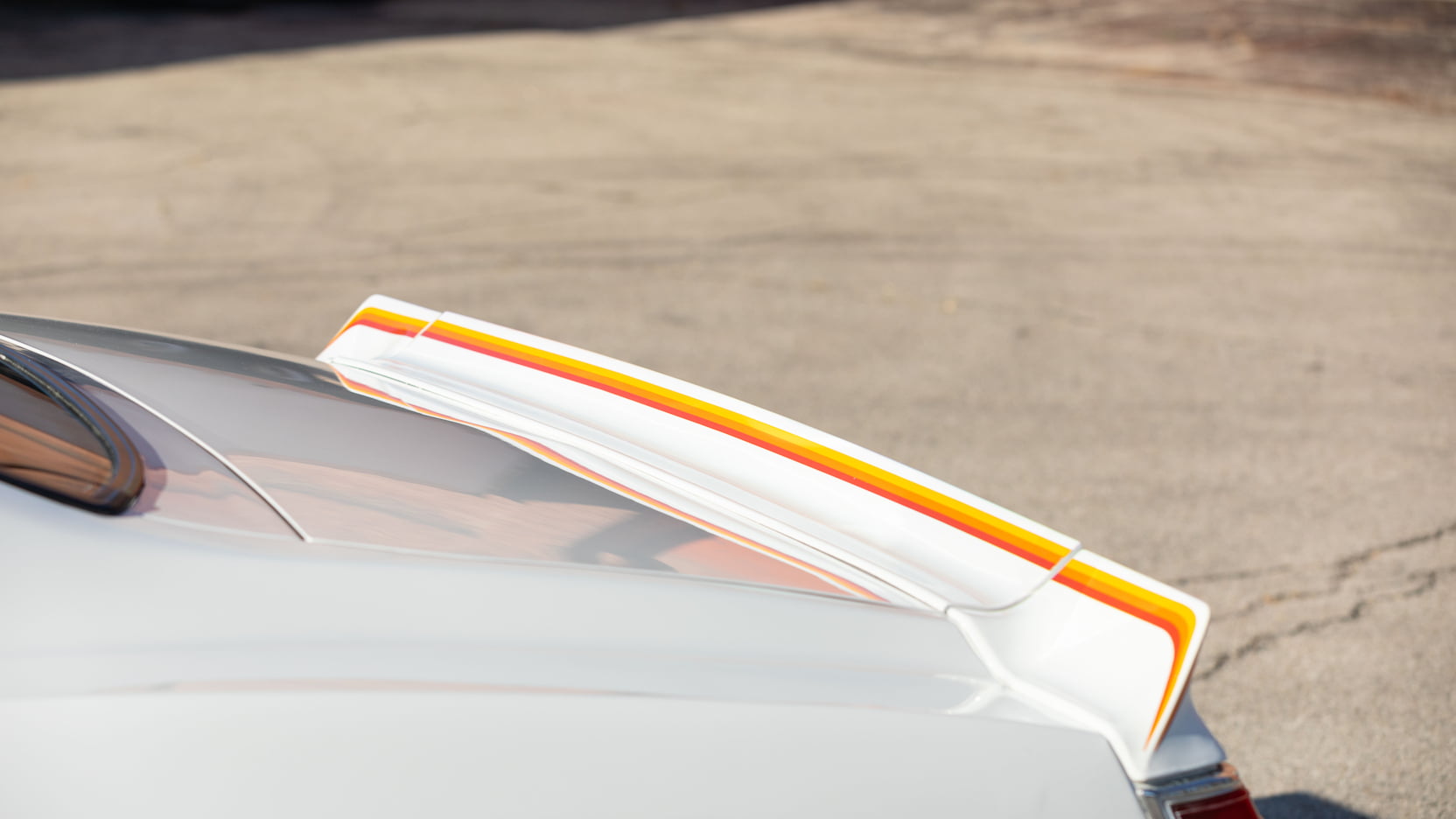
Everything, that’s what could go wrong. Just as Can Am number 1,133 was leaving the facility, disaster struck. The mold used for making the unique rear spoiler broke, and in those pre-CNC and 3D printer days, it was estimated that at least 90 days would be needed to repair or replace the tool. Pontiac had a few choices; they could have held up production or shipped cars without spoilers before having them installed at the dealership once they appeared. Pontiac executives who didn’t want the Can Am to begin with used this as the perfect excuse to instead simply scrap the whole Can Am program.
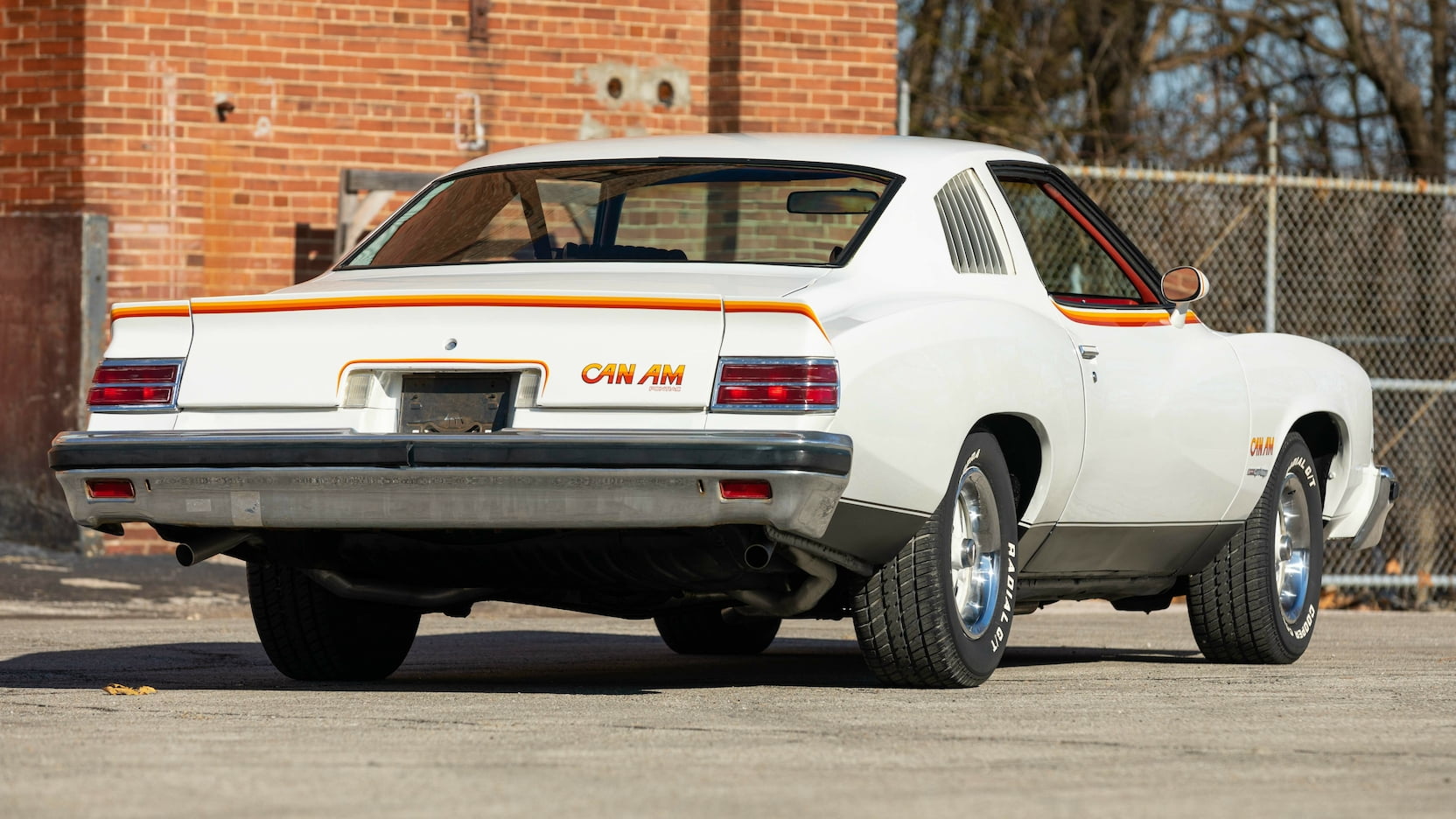
There are a variety of reasons cited for this. One is that Pontiac thought the Can Am was cannibalizing sales from the Grand Prix, but I’m not sure that I buy that line of thinking. More likely was the fact that the 1977 “Colonnade” bodystyle LeMans would be out of production in only a few months to be replaced by the new-for-1978 downsized model, for which that spoiler wouldn’t fit anyway. Besides, Pontiac was to relaunch an all-new LeMans-based, enthusiast-aimed Grand Am for ’78 as well, leaving no space for the Can Am.
Shut Down, But Not By A Hemi
You can’t fault Wangers for trying. Somehow, the bad luck of the malaise era was enough to snuff out even the best attempts at performance cars.
With a powerplant nearly identical to the one used as a starting point in the Macho T/A we covered a few weeks back, one wonders how similar performance mods to this big LeMans (including a manual ‘box, rear discs, and even that crazy turbocharger) might have created the ultimate anti-BMW family coupe. We’ll never know.

Looking at the prices of Can Ams recently sold, I was actually rather surprised. On one hand, the $25,000 to $40,000 that reasonable examples command seems steep for a malaise-era car with malaise-era performance. But considering that barely over a thousand units were built fifty years ago, there can’t be that many left today. With Mr. GTO behind the concept, there’s an innate street cred to the Can Am despite its rather tepid performance.
It’s not the fastest Pontiac by a long shot, but in terms of rarity and fun disco-era appearance, the Can Am will certainly turn heads and generate smiles wherever you take it. If Burt Reynolds’ Bandit needed to get eastbound and down with two or three more passengers, it might have been a great choice.
Pontiac Points: 78/100
Verdict: This ultra-rare near-miss with some provenance is way more show than go, but what a show!

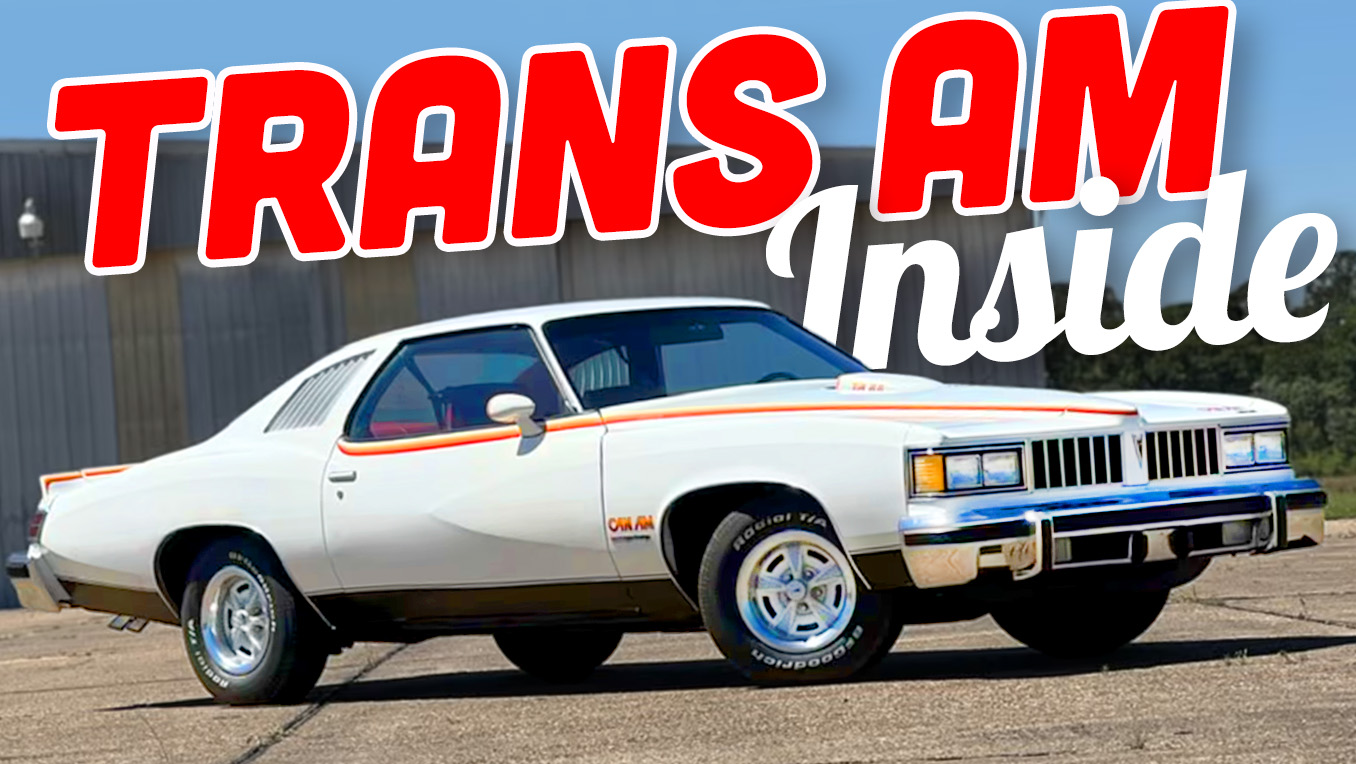






I’ve always liked that pointy hood and how that shape covers the whole hood…it’s just so unique
I miss Pontiac!
My dad was working at a Pontiac dealer and brought one of these home for my mom to replace her 66 Bonneville convertible. It had just come in and he thought it was perfect for her. She really didn’t like it. Too flashy. Then he brought home a 77 trans am. she really didn’t like it. No usable back seat. Of course my brother and I loved both of these. She decided to order a 78 Grand Prix. Nice car, but geez. For a family of gearheads?
In high school, I owned two 73 Grand Ams. Both white. They remind me of that All American concept car. One was actually a four speed. Couldn’t give them away back then, but I always thought the colonnade coupes were good looking. The rear 3/4 on the grand am was awesome.
I had a Matchbox or Hot Wheels or some kind of 1:64 scale of one of these when I was little. I thought it was awesome
Of all the GM divisions that have gone away, Pontiac, by far is the one I miss the least.
My dad and my grandfather were both Oldsmobile guys. And I loved the look of the Cutlasses of that era. But these Pontiacs. Ugh!
Were they the ones that said, “We build excitement!” More like excrement.
It’s crazy what an incredibly dumb looking car this is. It’s a frankenstein-esque car that looks exactly like that. It feels like the JV squad were given access to the parts bin to create whatever they wanted.
Pretty sure I’ve never seen one of these, but I do have a story about this model of Grand Am: back when I was in junior high, 9 of us piled into the Gran Am of our church youth group’s leader to drive to the beach (~20 minutes?). I think it was 3 in the passenger seat and 5 in the back. Safety first!
It’s like a Monte Carlo flew into a Lemans’s telepod and I don’t hate it.
I have always loved the Can Am. It’s top 3 of my favorite cars from the 73-80 era. Several years ago, on our way back through the CA Central Valley from Burning Man… we stopped off at a gas station in the middle of nowhere to fuel up. While I was at the pump, in pulled a Uhaul truck pulling a car carrier, with a very rough Can Am on the back of it. I totally geeked out over it. Even in the rough state it was in, it was awesome to see one in person. Talked with the guy, he had just purchased it and was about to embark on a restoration of it.
Always liked these! I’ve long loved the idea of building “could have been” versions of malaise era stuff, mostly from GM. A Can Am (don’t forget the very popular Canada/America race series from the 70’s) would be a great candidate for warming up either by going back a couple years for a big block or going forward a couple for a turbo (I’d go turbo). But I’ve also always loved these idea of taking a ‘74 Nova based GTO and imagining if Pontiac’s excellent OHC 6 previously talked about had survived. That, plus fuel injection (GM had been fooling with it but not getting serious for years by then) with a 5-speed and proper brakes and suspension…that’d be a good time.
Yes ok….The face screams Caprice to me…
And, well…did the GTO have a completely different parts bin that the Chevelle/Camaro/Oldsmobile/Buick versions?
Every single one of these makes me want to just de-smoggify it and put a reasonable carb on. Stylistically I think they’re all fine, even the weird beak-y one.
Also I saw one of those 1974s just this past weekend at a show and it was unlabeled and so I just sorta guessed. Turns out I was only off by a year! The Nova-isms are strong.
Every time I see malaise era big block horsepower I cringe, because they make less horsepower than our 2003 Buick LeSabre. Fortunately, or otherwise I sat out this era and drove imports in the 80s. Sure a VW Scirocco only had 75hp but it was an eager little engine hauling less than a ton.
Early Sciroccos were so cool looking. I didn’t like the curvier, smoother ones as much. And they probably got heavier in the evolution.
Remember Smoky and the Bandit? They had these shaker hood scoops on many of the Pontiac cop cars for some reason.
Maybe Jackie Gleason demanded such badassery
There were plenty of parts kicking around since, let’s face it, they’d tooled up and produced bits to make at least 5000 cars and stopped at 1000.
… and slamming them into the SATB cop cars for the movie makes sense to me. Fair enough.
Bishop. You’re a treasure and we love your content. Keep it rolling!
I’ve only seen one of these before, at a car show, but I thought it looked pretty neat for a malaise-era car. Not great, but it overall it was interesting to look at and not at all hard on the eyes.
Related but unrelated, earlier today I saw a 1983 Hurst-Olds at the mechanics shop by my house. It was in scruffy shape, but easily identifiable as an ’83 H-O (black with the orange graphics, not grey like the ’84). Like the Can Am, the ’83/84 Hurst-Olds made up for what it lacked in performance with style, and I love them almost as much as I love the Grand National.
it must have had the Lightning Rods shifter as well!
Ah yeah. Make that 200R4 seem like it isn’t the turd that it is!
My math teacher in junior high had one of these. It was magnificent back in the day.
A Hurst-Olds is much better than a hearse Olds, which I’ve also seen. But fortunately, not from the inside.
I really liked the earlier 442s.
Reading on Wikipedia, it was allegedly based on a police package I was totally unaware of. I don’t think I’ve ever seen an Olds police car.
Oldsmobile 442 – Wikipedia
“B09 Police Apprehender Pursuit”
Man, the memories! I’ve never seen one of these in person, but my first car was similar albeit not rare – pale yellow 1977 Grand LeMans with the ’76 Grand LeMans grill. It came with a 350 4-barrel and 2.41 gears so it took a couple of minutes 0-60, but it was a big American V8 coupe with a glass pack and 16 year old me was happy. By the time I sold the car in college, it was Autumn Maple Firemist Metallic, had a 400 from a ’78 Trans Am bored .030 over, 10:1 pistons, Edelbrock dual-plane intake and open-element air cleaner, headers and true dual exhaust with turbo mufflers, rear stabilizer bar from a 4-4-2, 200 PSI Gabriel gas shocks, and 245/60R15 raised white letter Firestone Firehawk SS tires at all four corners. It still had the stock cam and 2.41 gearing and still took a minute 0-60, but it sounded glorious and handled like a NASCAR stocker. The speeding ticket where I lost my license on points was for being clocked at 79 in a 55, on a curve marked 45. Pretty sure that trooper who met that monster on the curve browned his pants. I tried to get out if it, saying “Sir! This old thing could not possibly go that fast! Perhaps your calibration is off?” He listened to the rumble, looked at the fat tires, pushed down on the back bumper and felt almost no give, and said “Son, I think if any car in the county could go that fast on that curve, it’s this one.”
Anyway, I wold love to get another 76-77 LeMans and build a Can Am tribute, with specs more like mine (although with shorter gearing).
Love the story! Your build was what many others did back then to make the malaise era cars preform MUCH better than what they came with.
Adding a 3.73 rear gear, 2500 stall and a mild cam to your build would have transformed that into a mid 13sec busier back then which was legit fast, still quick now.
Malaise slowness was not hard to ‘fix’ with a bit of wrenching.
Adding gears and breathing to those big cube V8s helped a lot to those who dove in.